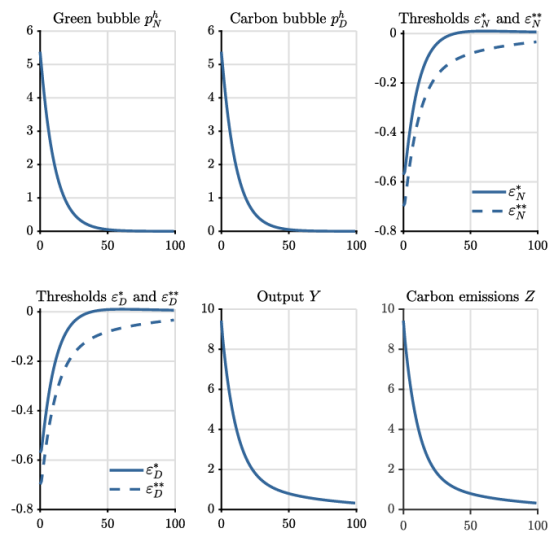
ABSTRACT
This paper investigates the emergence of carbon and green bubbles and their impacts on macroeconomic performance and the environment, with a particular focus on identifying the optimal monetary policy responses. We construct a two-sector dynamic stochastic general equilibrium (DSGE) model that incorporates monetary policy and allows carbon and green rational bubbles to emerge. We find that while supply-side shocks drive bubble formation in both sectors, demand-side shocks have a disproportionate impact on these sectors. The paper also shows that contractionary monetary policies are effective in reducing both carbon emissions and asset bubbles. Optimal monetary policy response to the emergence of asset bubbles is calculated, emphasizing the crucial role of central banks in designing monetary policy rules that account for the emergence of bubbles. Social welfare can be optimized by reducing annual interest rates by 0.0612% and 0.0512% when green and brown bubble sizes increase by 1%, respectively. Furthermore, the most effective strategy to achieve a significant improvement in social welfare in both the short-run and the long-run is to implement policies where nominal interest rates react negatively to both types of asset bubbles simultaneously. The impacts of carbon taxation and green credit policies on asset bubbles are also studied.
KEYWORDS
DSGE model; Carbon bubbles; Green bubbles; Monetary policy; Taylor rule
JCR CLASSIFICATION
Q1
Energy Economics
https://doi.org/10.1016/j.eneco.2023.107281
